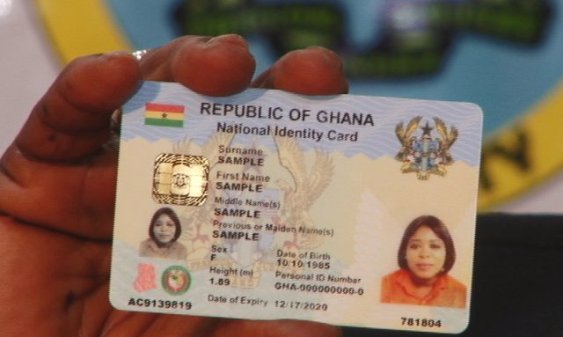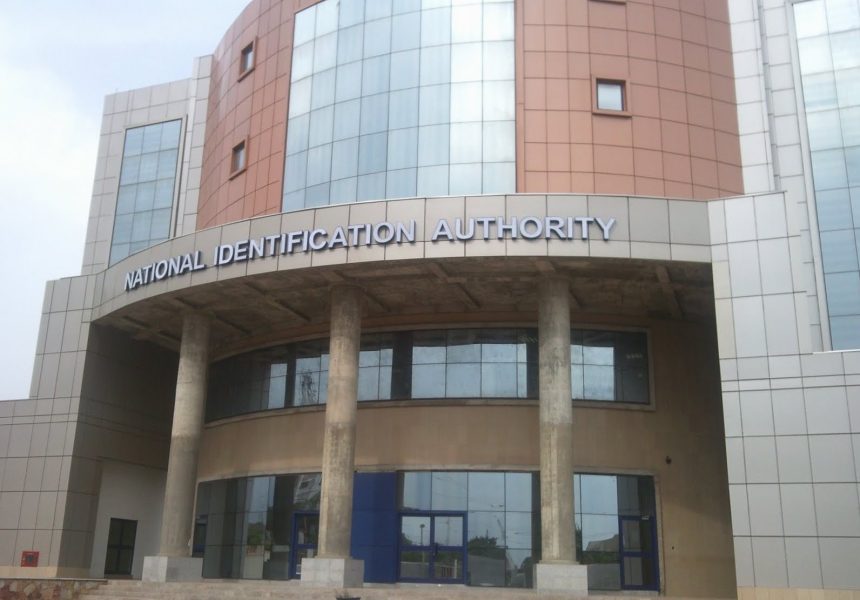In 2003, Under the Office of the President of Ghana, the National Identify Authority (NIA) was set up with the mandate to issue national ID cards and manage the National Identification System (NIS).
Subsequently, the National Identification Authority Act (Act 707) was passed in 2006 to give it the necessary legal premises on which to operate. The National Identity Register Act, 2008 (Act 750) was then passed to give authorization for collection of personal and biometric data and to ensure the protection of privacy and personal information of enrollees/applicants.
Fast forward to 2019 and you would think the majority of Ghanaians would have been issued their National identity cards. Well, you would think wrong…..
ID Card Overload
At the moment, this writer has a BUNCH of identity cards on his persons including:
- Drivers Licence
- Passport
- SSNIT Biometric Card
- Voters ID
- National Health Insurance Card
If one had to guess, you could say that the most popular ID cards that the average Ghanaian possesses are their Voters ID and National Health Insurance card.
The Ghana National ID cards were supposed to synchronize all these cards so you wouldn’t have to carry all of them or a majority of them on you. So what happened to these National ID cards and why has it taken so long? Here’s a timeline:
Timeline
Mass Registration In 2010
In 2010, the NIA was supposed to begin mass production of ID cards after a registration exercise. (Source). According to the NIA at the time, they printed 2.7 million cards out of the 15 million Ghanaians who had registered at the time.
Estimated Cost of Mass Registration: GHC 21 Million (~ $21 Million)
Re-Registration Exercise in 2015
In 2015, the NIA began ANOTHER mass registration of Ghanaians in 2015 for the National ID cards to be issued in 2016. (Source). Why did the NIA feel the need to undertake another registration considering that they already registered a majority of Ghanaians in 2010?
According to a spokesperson at the time, “earlier registration failed to capture the email addresses and telephone numbers of those registered and that has contributed to the failure of this outfit to locate and issue the cards to their owners.”
So with the re-registration exercise, the NIA would be able to capture contact details of those to be registered to make it easy for the authority to get back to people.
Other reasons stated for the registration was to capture bio data, build a disaster recovery center amongst other things.
Estimated Cost of New Registration: $115 Million (Source)
The New Ghana Card Registration In 2017
The NIA was supposed to roll out the Ghana cards in 2017 (Source) on pilot phase with mass registration expected to be carried out in 2018. Unfortunately, due to technical challenges and other reasons, the deadline was pushed back to 2019.

Official Start Of Registration in 2019
At the moment, the NIA is currently mass registering Ghanaians for a NEW Ghana card. (More details about the new Ghana Card here)
It’s a bit odd for a NEW registration exercise considering the fact that in 2015, Ghanaians had already had their information captured. So what happened to all that data? And why spend more on a whole new exercise?
Estimated Cost Of Project: $124 Million (Source)
Estimated Cost of National ID Card Project over the last 10+ years: $ 260 Million
Fun Facts: Here’s some information from the NIA website:

Unless the maths is off, NIA has printed 696,778 ID Cards for a population of 29,451,639 Ghanaians. Therefore the National Identification Authority has just produced cards for just 2% of the Ghana population.
If we were to be generous and say maybe 15 million Ghanaians were eligible for these cards like back in 2010, the NIA would have still just produced cards for 5% of the population….
If you had to grade the NIA on their job performance, they would be getting a big fat F.
10 Years Later….Where’s My Ghana Card?
Isn’t the failure to produce Ghana Cards after countless mass registrations just a result of competence?
Here’s a list of technology achievements in the world since the National Identification Authority was given the mandate to issue National Cards for the Ghanaian population:
- Sony launched the PlayStation 3 AND the PlayStation 4
- Google bought YouTube
- The iPhone was launched and has since produced the 3G, 4, 5, 6, 7, 8 and X iPhone models
- Telsa introduced their Tesla Model S, Model X and Model 3 electric cars (and also managed to launch and land a rocket on the landing pad at sea. See below:)
Anyway, you get the point….
The main point trying to be made is that an organisation was given the mandate to supply Ghanaians with a National ID card since 2006 and it has so far failed to live up to its mandate. So what’s going on?
Internal Competence? Lack Of Government Support? Or Both?
Without going into the issue of politicization of the Ghana Card, has the NIA been left hanging by past governments?
In 2014, the authority presented a budget of GHC 13 million to the government for its operations out of which an amount of GHC 760,000 Ghana cedis was approved. GHC 300,000 was later released at the end of 2014.
In 2015, NIA presented a budget of GHC 15 million to the government in 2015 but the government approved GHC 340,000 and the first tranche of GHC 30,000 had not been paid at the end of the first quarter. (Source).
So it would show that Government isn’t great at approving the budgets of the NIA for their operations. Can that be attributed to the poor work of the Authority so far?
But is money the only issue? couldn’t the NIA have worked with the Electoral Commission (EC) to share data on Ghanaian citizens which would have helped to cut costs of a new registration exercise? After all, the EC had to register citizens for upcoming elections with their biodata.
Fool Me Once, Shame On Me, Fool Me Twice….
Skepticism is high when it comes to whether the NIA can actually deliver this time when it comes to the delivery of the Ghana Cards. They already missed their deadline when they delivered only 80,000 cards in 2018.
The latest news is that the NIA hasn’t yet integrated its online application (Source: CitiNews). According to a spokesperson, applicants are expected to fill out their details in an online application and then print out the form (which will have a barcode) and present it at a registration centre.

At the moment, the NIA website is under construction and the portal has not yet been made to the public.
10+ years and counting and what does the organisation have to show for it…. If a body is supposed to produce work and for the past 10 years and it hasn’t done much to show for it, what does it say about the people running it?
I’d say that the National Identification Authority is a hot mess and that massive building is beginning to look more of an eyesore than a place where produces work.










